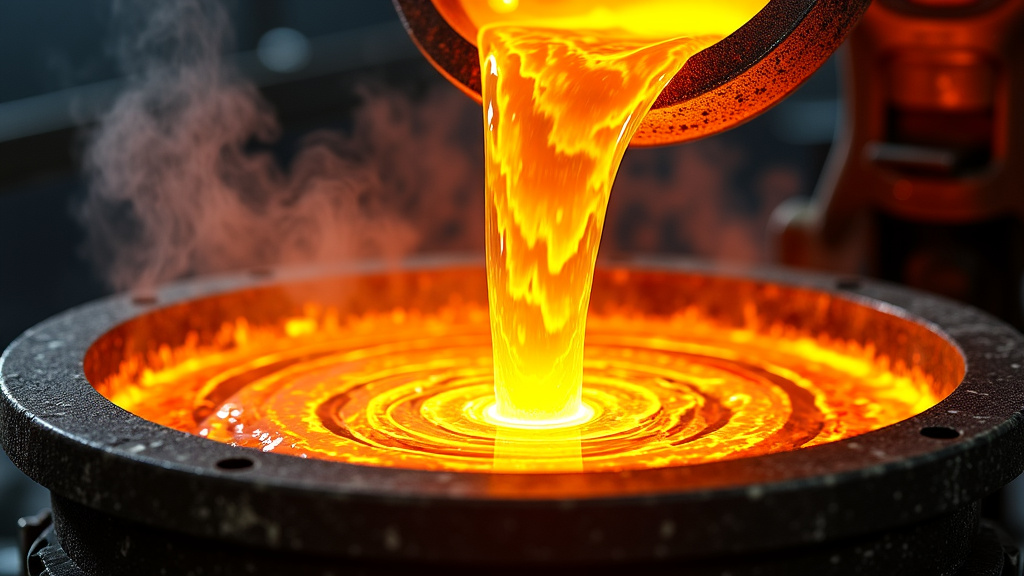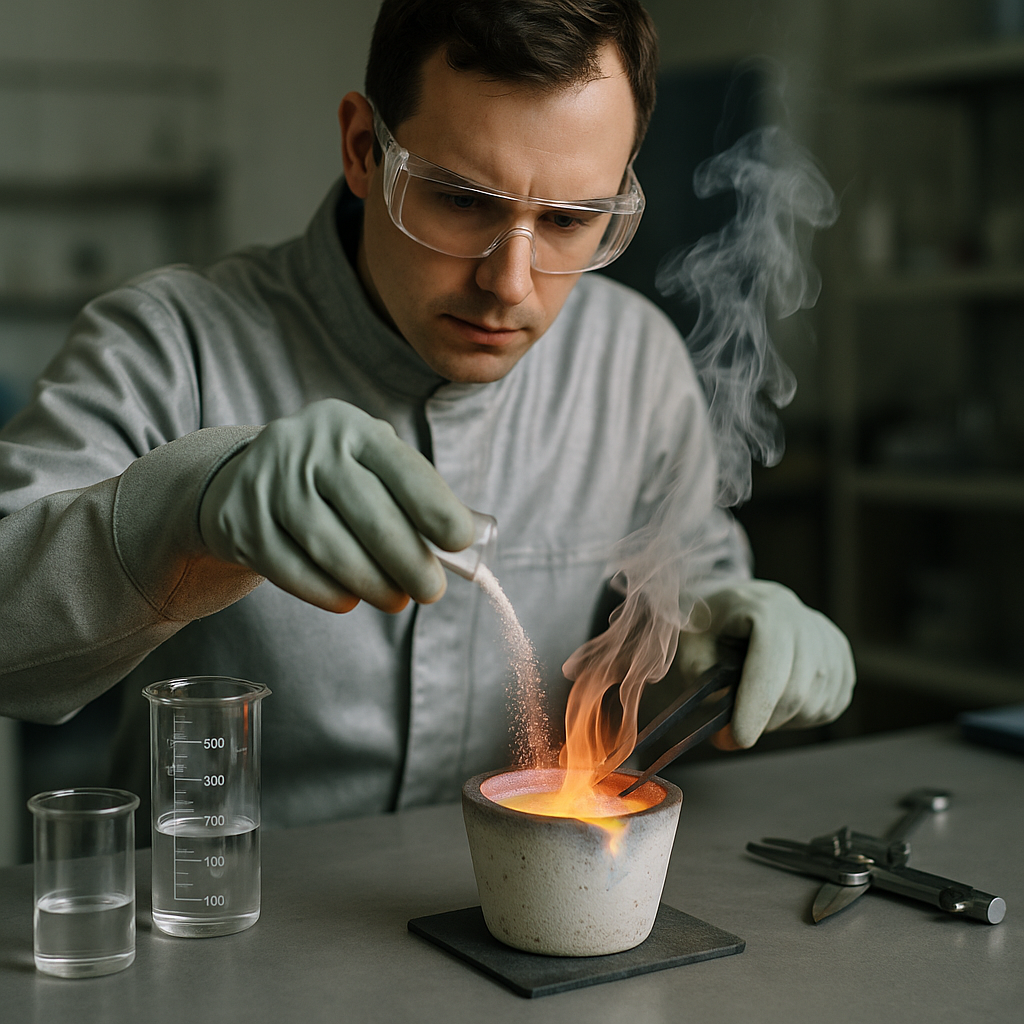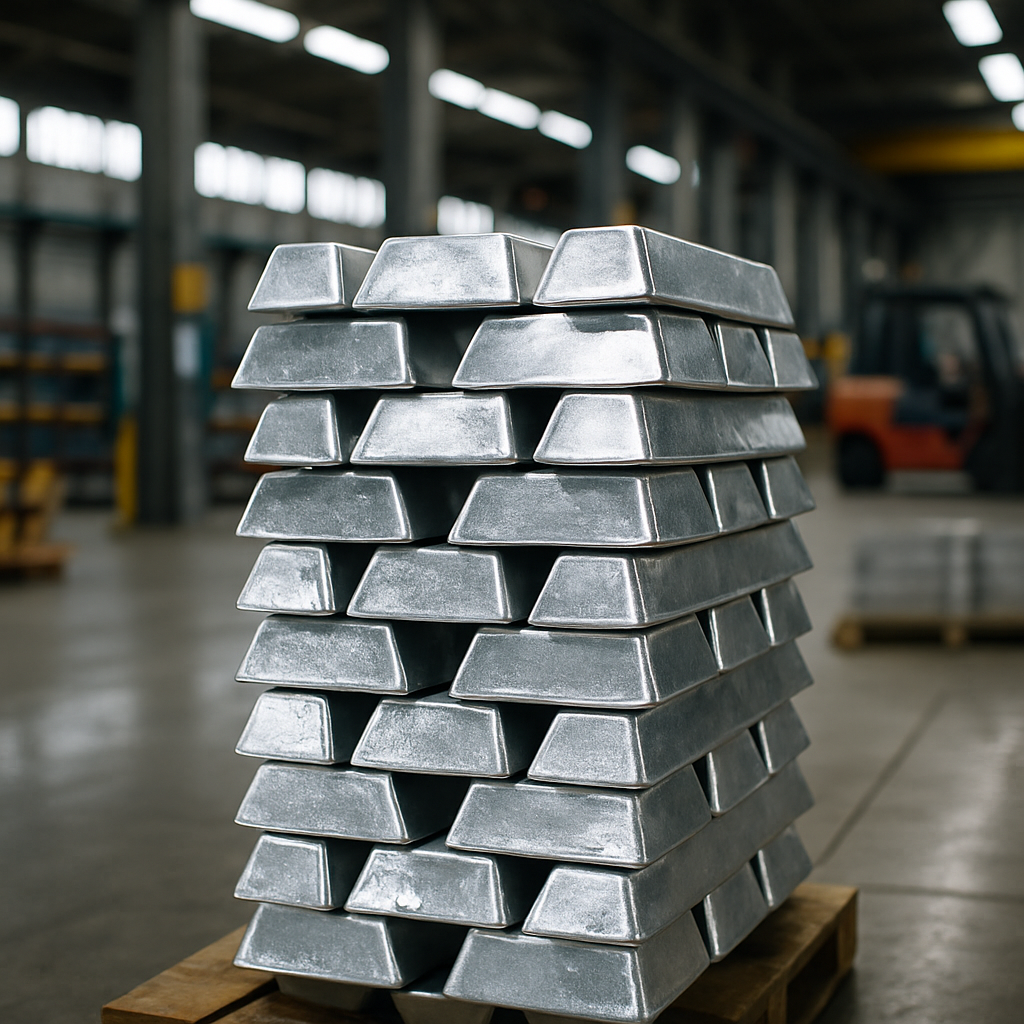5901 Botham Jean Blvd, Dallas, TX 75215
What Are the Key Methods for Removing Impurities from Molten Metal?
October 23, 2025The purity of molten metal significantly affects its performance, durability, and commercial value. In metallurgical processes, it is crucial to remove unwanted elements to produce high-quality metal products. Three primary methods have become industry standards for purifying molten metals.
Fire refining is one of the oldest and most widely used purification techniques. This process works through selective oxidation, where oxygen or air is introduced to the impure liquid metal. The impurities are oxidized before the base metal and are removed either as oxide slag floating on the surface or as volatile oxide gases. For metals like copper, iron, and lead, this approach efficiently removes contaminants such as zinc, tin, and sulfur.
Electrolytic refining achieves the highest purity levels in metal production. The process involves using the impure metal as an anode in an electrolytic cell, with pure metal serving as the cathode. When electric current passes through an appropriate electrolyte solution, metal ions dissolve from the anode and deposit at the cathode. This method not only produces exceptionally pure metal but also recovers valuable impurities from the insoluble sludge left behind.
What is the Process of Electrolytic Refining for Molten Metals?

Electrolytic refining is one of the most effective methods for producing exceptionally pure metals in the metallurgical industry. This process can achieve purity levels of 99.95% or higher, making it crucial for applications requiring high-conductivity metals, such as electrical components.
The Basic Setup of Electrolytic Refining
The electrolytic cell forms the heart of the refining process, consisting of four key components working together to purify metals:
First, the impure metal serves as the anode (positive electrode), typically containing various impurities that need removal. Second, a thin sheet of highly pure metal forms the cathode (negative electrode). Third, an electrolyte solution fills the cell—usually a solution containing metal salts of the same metal being refined. Finally, a direct current power supply completes the system.
How the Purification Process Works
When electric current passes through the system, several reactions occur simultaneously. At the anode, metal atoms lose electrons and dissolve into the electrolyte as positively charged metal ions. This oxidation reaction can be represented as: Metal → Metaln+ + ne–.
These metal ions migrate through the electrolyte solution toward the cathode. At the cathode, metal ions gain electrons and deposit as pure metal atoms. This reduction reaction can be written as: Metaln+ + ne– → Metal.
This process is selective, as less reactive impurities like gold, silver, and platinum don’t dissolve at the anode. Instead, they fall to the bottom of the cell as valuable “anode sludge” that can be collected and processed separately. More reactive impurities may dissolve but typically won’t deposit at the cathode due to their different reduction potentials.
Industrial Applications
Copper refining is one of the most common applications of electrolytic refining. Blister copper (98–99% pure) undergoes electrolysis in a copper sulfate solution, producing copper with 99.95% purity. This high-grade copper is essential for electrical wiring and electronic components.
Gold refining uses a similar principle but different electrolytes. In the Wohlwill process, gold is refined using a gold chloride electrolyte with hydrochloric acid. This method can produce gold with purity exceeding 99.99%.
Silver undergoes electrolytic refining using a nitric acid bath, with crude silver as the anode and pure silver as the cathode. This produces silver at approximately 99.9% purity.
Advantages of Electrolytic Refining
The primary advantage of electrolytic refining is the exceptional purity of the final product. For applications in electronics, aerospace, and precision manufacturing, this level of purity is essential.
The process also offers environmental benefits compared to chemical purification methods, producing fewer harmful fumes. The closed-loop system minimizes metal loss during processing, making it economically efficient for precious metals recovery.
Another significant advantage is recovering valuable by-products. The anode sludge often contains precious metals like silver, gold, and platinum group metals that can be further refined and sold, offsetting operational costs.
Electrolytic refining is a cornerstone technology in modern metallurgy, enabling the production of ultra-pure metals needed for advanced technologies while recovering valuable by-products that would otherwise be lost in alternative refining processes.
How are Chemical Methods Used to Purify Molten Metals?

Chemical refining methods rely on specific chemical reactions to remove impurities from molten metals, offering precision that physical separation techniques cannot achieve. Unlike physical methods that separate impurities based on differences in density or melting points, chemical refining targets specific contaminants through controlled reactions.
The Nickel Carbonyl Process
The nickel carbonyl process, also known as the Mond process, is a notable example of chemical purification that produces extremely high-purity nickel. This process works through a series of targeted chemical reactions:
First, impure nickel reacts with carbon monoxide at temperatures between 50-60°C to form nickel tetracarbonyl gas:
Ni (impure) + 4CO → Ni(CO)4 (gas)
The advantage of this reaction is its selectivity. While nickel readily forms the carbonyl compound, most impurities do not react with carbon monoxide under these conditions. The nickel carbonyl gas separates from solid impurities, creating a clean division between the nickel and contaminants.
Next, the purification completes when the nickel carbonyl gas decomposes at higher temperatures (around 180-200°C):
Ni(CO)4 → Ni (pure) + 4CO
This decomposition produces high-purity nickel metal while releasing carbon monoxide gas that can be recycled back into the process. The resulting nickel has a purity exceeding 99.95%, making this process valuable for applications requiring exceptionally pure nickel.
Flux Refining Methods
Flux refining represents another effective chemical approach to metal purification. This method involves adding specific chemical compounds (fluxes) to molten metals to react with and remove undesirable impurities, particularly oxides.
In aluminum refining, for example, fluxes containing compounds with low density, high activity, and strong adsorption capacity are added to the molten metal. These fluxes work through several mechanisms:
- The flux chemically reacts with oxide impurities in the melt.
- New compounds form that rise to the surface as slag.
- The slag layer can be physically removed from the surface of the molten metal.
A typical aluminum flux purification process involves adding a mixture of salts containing chlorides and fluorides. These compounds adsorb aluminum oxide (Al2O3) particles, forming a slag that separates from the molten aluminum. The slag forms droplets that rise to the surface, where they can be skimmed off before casting.
Chemical vs. Physical Separation Techniques
Chemical refining methods offer significant advantages over physical separation techniques in several key areas:
Selectivity: Chemical methods can target specific impurities through precise chemical reactions, whereas physical methods like flotation or gravity separation rely on broader physical properties.
Purity levels: Chemical refining typically achieves higher purity levels than physical methods alone. The nickel carbonyl process can produce nickel with 99.95-99.99% purity, far exceeding what is possible with physical separation.
Impurity types: Chemical methods excel at removing chemically bound impurities like oxides and sulfides that physical methods cannot address. Physical techniques mainly separate materials based on density, size, or magnetic properties.
Other Chemical Refining Methods
Beyond the nickel carbonyl and flux processes, several other chemical refining methods are commercially important:
Chlorination: In aluminum purification, chlorine gas can be bubbled through molten aluminum to remove impurities like magnesium. The chlorine reacts with magnesium to form magnesium chloride, which can be removed.
Mixed gas purification: Combinations of gases like nitrogen with 10% chlorine are used in aluminum refining. These mixed gases remove hydrogen and separate oxides while simultaneously eliminating certain metal impurities.
Electrorefining: This hybrid chemical-electrical method uses electrolytic cells with diaphragm compartments to prevent impurities from passing from anode to cathode. The metal is deposited onto pure cathodes from sulfate or chloride solutions.
Chemical refining methods have revolutionized metal purification, enabling the production of ultra-high-purity metals essential for electronics, aerospace applications, and specialized industrial uses. While these processes often require careful handling of hazardous chemicals, their ability to achieve exceptional purity levels makes them indispensable in modern metallurgy.
Conclusion: The Importance of Proper Molten Metal Purification

Effective purification of molten metal is essential for quality metalworking. This crucial process removes harmful contaminants that could compromise structural integrity, conductivity, and performance. From aluminum automotive components to steel infrastructure, purification directly affects product lifespan and reliability in practical applications.
The metal industry is continually advancing purification technologies, developing more efficient filtration methods and sustainable techniques. These innovations help manufacturers meet increasingly stringent quality standards while reducing environmental impact. For organizations looking to optimize metal recycling initiatives or implement effective purification systems, contact Okon Recycling at 214-717-4083.
